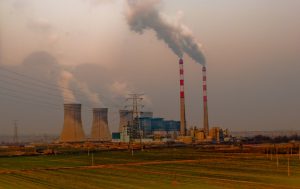When will China’s carbon-dioxide emissions peak? Lately it’s been a recurring question – and a topic of some controversy – particularly in the run-up to a key UN climate summit in September, which US President Barack Obama and Chinese President Xi Jinping will both attend.
Addressing a gathering of environment ministers in Germany earlier this month, China’s chief climate negotiator Xie Zhenhua suggested that next year the world’s largest carbon emitter could reveal its planned “peaking year”.
Setting a peak does not necessarily mean China will introduce an absolute cap on its emissions – as opposed to its current reduction targets on the carbon intensity of its economy – but hopes for, and speculation about such a policy underlie and overlap with much of the peak-year debate, particularly since He Jiankun, chairman of China’s Advisory Committee on Climate Change, publicly suggested that the country’s next Five Year Plan, from 2016-2020, might see the introduction of such a cap.
Speaking to chinadialogue, Wang Yi, a member of China’s legislature the National People’s Congress, also said that “absolute quantity caps should be considered” in the 13th Five Year Plan.
Now, writing for Project Syndicate with the prominent British economist Nicholas Stern, He Jiankun, Director of the Energy, Environment, and Economy Research Institute at Tsinghua University, sets out more of his thinking on the Chinese government’s efforts to build an economy that is “more innovative, inclusive, efficient, and sustainable” –plans for which “are being formulated and implemented”.
According to Stern and He, these plans already include China’s huge investments in renewable energy and adjustments aimed at reducing China’s dependence on heavy industry, moving towards “more stable, higher-quality GDP growth”.
The next Five-Year Plan, they write, should include “more stringent restrictions on coal consumption and greenhouse-gas emissions” as well as additional investment in research and development.
So, when will China’s carbon-dioxide emissions peak? According to Stern and He, the country’s climate policies suggest carbon emissions could peak by 2030, with an economy growing at a rate of 4%-5%. These targets, they write, are “ambitious” but “entirely achievable”; perhaps more tantalisingly, they add that with a “sufficiently strong commitment from policymakers and businesses”, China could “reach its clean-energy goals ahead of schedule”.
Such a “deepening commitment to sustainability”, conclude Stern and He, could improve the chances that the UN climate conference in Paris in 2015 will produce a global agreement.








